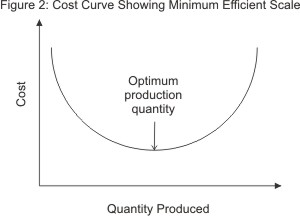.jpg)
Adapted from The Star Newspaper Online dated on 16th April 2010, “About 300 tickets for the final were to be sold on a first-come first-served basis. Fans inside the ticketing center slept on the floor as they waited to be served.”
Wonder why FIFA choose to sell about 300 tickets for the
final using the mechanism “First-come, first-serve”?
First and foremost, I need to explain some of the economic theories applied by FIFA.Tickets are limited as the stadium can only contain a certain amount of people. As you know,FIFA World Cup catches nationwide attention and World Cup does not happen every year. In fact,World Cup only will be held once every four year. Thus, the quantity demanded will be higher than the quantity supply and equilibrium will be almost impossible to achieve. In equilibrium, the quantity demanded for the tickets is equal to the quantity supplied by the ticketing centers. As what is shown in diagram below, the demand curve and the supply curve intersect at a point (allocation of tickets are efficient). Assume that the price of each ticket sold by ticket centers is 500USD (equilibrium price) and the equilibrium quantity is 4 million tickets (assuming that the venue can only fit maximum capacity of 4 million fans).
Consumer surplus in this case is
the excess of benefit received from the ticket over the amount the fans paid.
This can be calculated by using the formula of triangle. The area of this
triangle is equal to its base (300,000 tickets) multiplied by its height
(500USD) divided by two, which is 75 million USD. Producer surplus in this case
is the excess of the amount received from the sale of the tickets over the cost
of producing it. This can also be calculated by using the formula of triangle,
which is the base (300,000 tickets) multiplied by its height (300USD) divided
by two; the answer will be 90 million USD.
If FIFA decided to fix the price of
each ticket to 400USD (maximum price), this price ceiling will cause an excess
of demand and the tickets available is 200,000 tickets (as shown in diagram
below). Hence, there will be a shortage of 100,000 tickets. Somehow in some ways, the number of tickets
available (quantity supplied) need to be allocated among the frustrated fans.
On the other hand, if the price ceiling is set above the equilibrium price (maximum
price), there will be no effect.
Other than causing shortage, if the
price ceiling is set below the equilibrium price, an inefficient will happen.
The price ceiling (400USD) is below the equilibrium price (500USD) and the
quantity of tickets supplied (2 hundred thousands) is less than the efficient
quantity (3 hundred thousands). Deadweight loss also occurs as the quantity of
tickets supplied (available) is less than the efficient quantity. Moreover,
producer surplus and consumer surplus shrink. There will also be a potential
loss from searching the tickets which is bear by the fans.
Furthermore, price ceiling encourages black market which is an illegal market that the equilibrium price exceeds the price ceiling (or maximum price). When price ceiling is enforced, frustrated ticket sellers will find ways to increase the price. The level of black market price depends on how tightly the rent ceiling is enforced. When the enforcement is strict, the black market price is equal to the maximum price that the fans are willing to pay. However, if the enforcement is loose, the black market price is close to the unregulated price. The “black dot” shows the maximum black market price of the tickets. To the quantity of 2 hundred thousands, some of the fans are willing to pay 700USD. It’s either they pay the black market price or continue to search for tickets.
Why am I telling you all these? It’s because this is what happens here. Because of the rent ceiling and persistent shortage, FIFA decided to sell about 300 tickets for the final using the mechanism of “first-come, first-serve”. This mechanism is actually one of the ways to allocate scarce tickets as tickets are limited. In other words, tickets are sold to the first few hundred people who took time to line up at the ticket center way before the center start selling tickets.
In my opinion, this is mechanism is
only fair to a certain extend as one person might buy more than one ticket. For
example, if one person is only limited to buy four tickets at most and each one
of them bought four tickets. Mathematically, only about 75 people get to buy
the tickets. This means that the rest of the people who line up early won’t get
to buy the tickets. In the end, they will become more frustrated if they don’t get
to buy the tickets. In addition to that, are the tickets worth lining up? The article
also states that some fans inside the ticketing center even sleep on the floor
as they waited to be served. The time that they spend on lining up can be used
to do other activities that are more beneficial. The marginal cost of lining up
is the cost of not spending the time to do other activities.
Other than the first-come, first serve mechanism, there are actually some other possible mechanisms that can be used to allocate scarce tickets. One of those is lottery. A lottery can allocate the tickets to those who are lucky. Whether if you‘re extremely rich or whatsoever, you still can‘t buy one. There’s also the discrimination mechanism which I think it’s more unfair than first-come, first serve mechanism. This is because discrimination that based on nationality, family ties, friendship, race and etc. might be involved in. We can’t prevent this mechanism to occur whether we it or not.
So, price cap works or not? It
varies depending on individuals.


.jpg)

.jpg)



.jpg)


.jpg)

.jpg)
.jpg)
